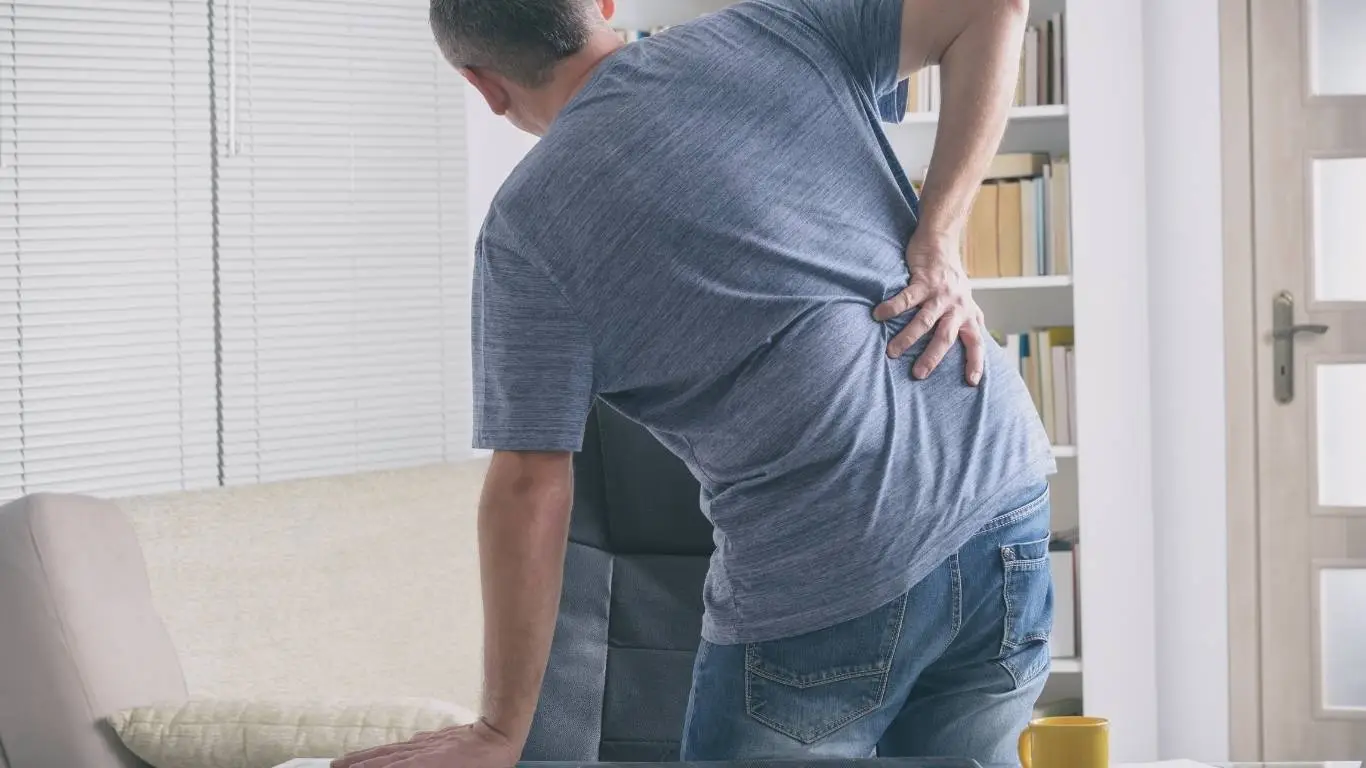Simple Breathing Techniques That Improve Spinal Alignment Fast
Breathing. It’s one of those things we do every day without thinking. But what if I told you that the way you breathe could directly impact your spine health? A couple of years ago, I started having nagging lower back pain after long hours at my desk. It wasn’t until I worked with a physical therapist who introduced me to diaphragmatic breathing that I realized how powerful proper breathwork could be for posture and spinal alignment. Breathing correctly doesn’t just calm your mind—it physically supports your spine. Let’s dive into how.
Why Breathing Matters More Than You Think

Your respiratory diaphragm is more than just a muscle for air exchange. It’s intricately linked to your core stability system. When you breathe deeply and correctly, especially using your diaphragm, you’re actually creating intra-abdominal pressure that supports your lumbar spine. This pressure acts almost like an internal back brace.
Unfortunately, many of us develop shallow or chest-dominant breathing patterns, especially during stress, long-term desk work, or postural compensation. This can lead to poor core activation, spinal instability, and eventually—chronic back pain.
The Science Behind Breath and Spinal Alignment

Proper breathing, particularly through the diaphragm, engages the core muscles in harmony with your pelvic floor, multifidus, and transverse abdominis. Think of it like a canister: the diaphragm on top, the pelvic floor on bottom, and your core wrapping around like a barrel.
How Poor Breathing Affects the Spine
- Reduced core engagement: Without the diaphragm working optimally, the rest of your core loses stability.
- Forward head posture: Shallow breathing often causes chest elevation and neck tension.
- Increased spinal load: Compensations can cause spinal segments to bear more load than they’re designed for.
Over time, these imbalances can lead to conditions like chronic postural back pain or aggravate existing spinal issues such as herniated discs and muscle strain.
Foundational Breathing Techniques for Spinal Health

1. Diaphragmatic Breathing
This one changed the game for me. I used to feel my chest rise with every breath, but once I shifted to belly breathing, I could literally feel more control in my core. Try this:
- Lie on your back with knees bent and feet flat.
- Place one hand on your chest, the other on your belly.
- Breathe in through your nose for 4 seconds—feel your belly expand.
- Exhale slowly through your mouth for 6 seconds.
It’s simple, but when practiced regularly, it activates deep stabilizing muscles that support your spine.
2. Box Breathing
Popularized by Navy SEALs, box breathing isn’t just for focus—it regulates the autonomic nervous system and improves postural muscle coordination.
- Inhale for 4 seconds
- Hold for 4 seconds
- Exhale for 4 seconds
- Hold for 4 seconds
Try integrating this during your breaks or as part of your morning mobility routine. It complements physical back pain relief strategies like targeted back stretches.
Real-World Application: Breathing During Movement

One common mistake I made early on was breathing inconsistently during exercise. I used to hold my breath during squats or planks—big mistake. Coordinating breath with movement not only enhances performance but protects the spine.
Breathe with Intention During These Activities:
- Deadlifts and squats: Inhale before you lift, exhale through the exertion. This braces the spine.
- Planks: Steady diaphragmatic breathing keeps core muscles engaged without strain.
- Yoga: Link each movement with slow, deep breaths to enhance mobility and alignment.
Pairing these techniques with mindfulness approaches—like meditation for chronic pain—amplifies their benefits. It’s not just physical, it’s neurological.
Who Should Practice Breathwork for Spinal Alignment?

The beauty of breathwork is that it’s universal. Whether you’re a desk worker, athlete, postpartum mom, or someone living with degenerative disc disease—this applies to you. Especially if you’re dealing with chronic vs. acute back pain, refining your breathing could be the missing link in your recovery.
In my case, integrating breath training alongside core stability exercises completely changed how my body moved. I stopped “bracing” in unhealthy ways and started moving with intention.
Where Breathwork Fits into a Full Back Pain Management Plan

While breathwork on its own is powerful, it’s best used as part of a broader spinal wellness plan. That includes:
- Correcting postural habits
- Regular mobility training
- Strengthening underused muscles like the glutes and deep core
- Exploring exercise, rehab, and ergonomics approaches
- Considering lifestyle changes like anti-inflammatory diets and stress management
For a solid foundation on addressing back pain comprehensively, I’d recommend browsing the main back pain guide and diving deeper into the mental and emotional aspects of spinal pain. These links offer valuable insights that align well with breathwork practices.
Advanced Techniques to Take Your Breathwork Further

Once you’ve nailed the basics like diaphragmatic and box breathing, you might be wondering—what’s next? That’s exactly where I was after a few months of consistent practice. I could feel the difference in my posture and lower back, but I wanted to challenge my stability and increase control. That’s when my trainer introduced me to more advanced breathwork tools.
1. 360° Core Breathing
This method focuses on expanding your breath—not just into your belly—but outwards in all directions: front, sides, and even into your lower back. It’s ideal for enhancing lumbar support and activating your obliques, pelvic floor, and diaphragm simultaneously.
- Stand tall or sit upright with your spine neutral.
- Place your hands on your lower ribs and back.
- Inhale through your nose and feel your ribs expand outward—not just forward.
- Exhale fully, letting the core draw in.
This one was a game changer for me, especially while dealing with tension after sitting for hours. I also found it particularly useful when preparing for weight training with a history of back pain.
2. Breath Holds and Deliberate Pausing
Once you’re more confident with your breath rhythm, you can incorporate short pauses between inhale and exhale. This enhances your control and helps reprogram your nervous system for better movement coordination—something crucial for conditions like lumbar radiculopathy or when recovering from flare-ups.
But here’s the deal: don’t overdo it. I learned the hard way when I pushed too hard and felt lightheaded mid-session. Always listen to your body and progress at your pace.
How Breath Shapes Recovery and Pain Management

Breath isn’t just a tool for stability—it’s a healing mechanism. In fact, many physical therapists today use guided breathing to help patients recover from conditions like degenerative disc disease or post-operative stiffness.
By enhancing oxygen flow, modulating the nervous system, and improving movement precision, breath becomes a central part of conservative treatment. One of my colleagues even swears by pairing breathwork with therapeutic massage for better outcomes.
Even emerging research from ncbi.nlm.nih.gov and clevelandclinic.org backs this up—showing that structured breathing can reduce pain perception and support spine function over time.
Combining Breath with Lifestyle Choices

What I’ve found is that breathwork works best when integrated with smart daily habits. Just like flat feet can disrupt spinal alignment, poor sleep or bad chairs can undo breath gains. That’s why pairing breathing exercises with overall lifestyle changes makes the biggest difference.
Key Habits That Compliment Breath Training:
- Use standing desks or alternate positions during work
- Sleep on a supportive mattress with neutral spinal alignment
- Wear footwear that doesn’t alter pelvic tilt or arch position
- Follow an anti-inflammatory diet to ease muscular tension
- Incorporate mindfulness or meditation to reduce pain-related anxiety
The breath is often the first thing to go when we’re stressed—and that’s exactly when we need it most.
Making Breathwork a Daily Habit

If you’re just starting out, try setting reminders on your phone. I do a 2-minute breathing check-in first thing in the morning and again in the afternoon. It’s part of my non-negotiables—right up there with hydration and stretching.
Here’s a sample daily integration routine I follow:
- Morning: 3 sets of diaphragmatic breathing before coffee
- Midday: Box breathing while walking or during a standing desk break
- Evening: Gentle 360° breathing while lying in bed or after yoga
If you’re working with a therapist, ask them how you can layer breathwork into rehab. If not, consider exploring virtual therapy or guided sessions focused on breathing and posture correction.
Breathing for Specific Back Conditions

Different back conditions respond differently to breath training. For instance, someone with scoliosis may need to emphasize lateral expansion, while someone with lumbar herniation might benefit from focused bracing breath strategies.
Some targeted ideas:
- Scoliosis: Unilateral rib breathing to address asymmetries
- Herniated disc: Gentle belly breathing with pelvic tilt control
- SI joint pain: Combine breathing with pelvic floor activation
- Chronic tightness: Incorporate extended exhales to release muscular tension
Breath becomes the custom-fit tool your spine needs, especially when supported by personalized exercises like those found in conservative treatment plans.
Final Thoughts: Breath as a Long-Term Strategy

If you take away one thing from this—it’s that breathing well isn’t just about air. It’s about awareness, support, control, and healing. I still remember how it felt to sit pain-free for the first time in months after consistently applying these breathing techniques. It wasn’t some quick fix. It was steady, intentional effort.
For anyone looking to build a long-term spinal health strategy, I recommend starting with the full guide on back pain causes to better understand your triggers and explore how breath can play a role. You’ll also find support and related insights in our main back pain pillar, which brings together various approaches—from posture to rehabilitation, and yes—breath.

Camellia Wulansari is a dedicated Medical Assistant at a local clinic and a passionate health writer at Healthusias.com. With years of hands-on experience in patient care and a deep interest in preventive medicine, she bridges the gap between clinical knowledge and accessible health information. Camellia specializes in writing about digestive health, chronic conditions like GERD and hypertension, respiratory issues, and autoimmune diseases, aiming to empower readers with practical, easy-to-understand insights. When she’s not assisting patients or writing, you’ll find her enjoying quiet mornings with coffee and a medical journal in hand—or jamming to her favorite metal band, Lamb of God.






